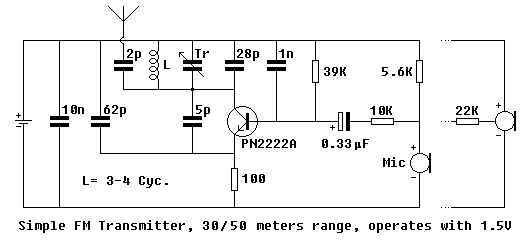
James Parker on Processes, Threads, And… Fibers?.The Gambler on Carbon Fiber With 3D Printing.pelrun on Carbon Fiber With 3D Printing.Hackaday Podcast 237: Dancing Raisins, Coding On Apples, And A Salad Spinner Mouse 7 Comments

Combined with a little transmitter like this that wouldn’t be too bad.
3 TRANSISTOR FM TRANSMITTER WITH COIL ON CIRCUIT BOARD FULL
I don’t get why people have to put a full HT in a balloon to do APRS but they can get a more complicated radio like Zigbee on a chip! Something isn’t right about that. His main gripe was that he felt it was too heavy and too expensive when he used to put APRS in a balloon. He was ranting and ranting about how much he hated ham radio.

I met someone at a maker ‘show and tell’ sort of meeting once. I think it would be useful for things such as near space balloons. I’ve wanted to see someone do this for quite a while now. I’ve thought about digging up one of my old magazines and trying it but I’m not quite knowledgable to do the conversion yet. What I don’t know is if thre frequency would be stable enough. I’m pretty sure that wouldn’t be too hard for someone with just a bit more knowledge than myself. I suspect range wouldn’t be a problem due to altitude. It would have to have it’s frequency raised (144.39 in North America) and it would have to have it’s modulation changed to NFM instead of WFM. Something I have been wondering for a while is if one of these simple 2 or 3 transistor FM transmitter designs could be adapted for APRS. Nice! I remember when circuits like this were very common in electronics magazines. Emissions must be kept within the 88.0 to 108.0 MHz band under Part 15 rules.” This is roughly equivalent to 0.01 microwatts. Unlicensed broadcasts on the FM broadcast band (88 to 108 MHz) are limited to a field strength of 250 µV/m at a distance of 3 meters from the antenna. “On the standard AM broadcast band, transmission power is limited by 100 milliwatts of DC input power to the final RF stage (with restrictions on size, height and type of antenna), or, alternatively, under 15.221, if the AM transmission originates on the campus of an educational institution, the transmission can theoretically be any power so long as it does not exceed the field strength limits stated in 15.209 at the perimeter of the campus, 24000/fkHz µV/m.

IIRC, you can actually go farther with AM than FM, because the measuring rules are different – AM limits are based on input power to the antenna (which gives you some freedom in antenna design), while FM simply measures field strength post-transmission. In the US, devices like this typically fall under FCC “Part 15” rules for unlicensed, intentional transmission. Posted in Radio Hacks Tagged bug, fm, fm transmitter, transmitter, wireless bug Post navigation Awesome work, and for someone so young, already seems to have a grasp of all the random, seemingly useless information that makes prototyping so much easier. The power supply for the transmitter is a single 9V battery, the battery connector being salvaged from a dead 9V. He gets bonus points for using a 1/4 – 20 bolt for winding the coil, too. The components found in the transmitter are pretty standard and with the exception of the trimmer cap and electret mic, can be picked up in the parts drawers of any Radio Shack. Using photosensitized copper clad board, laid out the circuit with Fritzing, etched a board, and went at it with a drill. The FM transmitter circuit itself is based off one of ’s builds, but instead of the solderless breadboard construction you would expect to find in a small demo circuit, went all the way, etching his own PCB and winding his own coil. He’s built himself an amazingly well constructed FM transmitter that’s powerful enough to be received a quarter mile away. Is only 15, but that doesn’t mean his fabrication skills are limited to Lego and K’Nex.


 0 kommentar(er)
0 kommentar(er)
